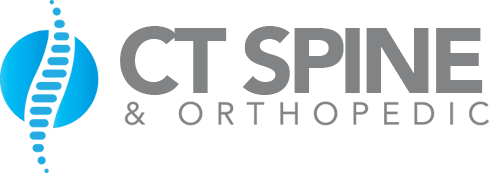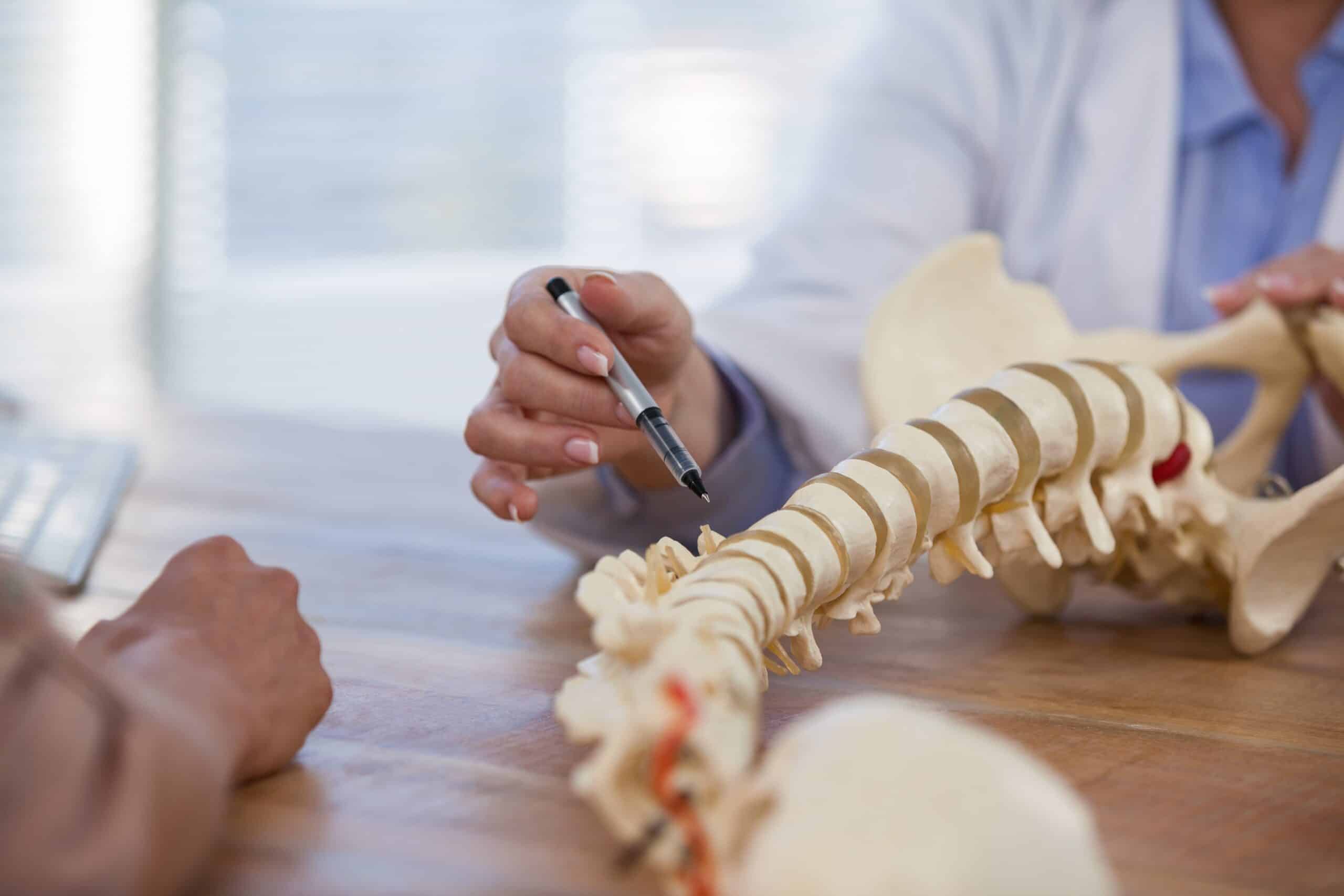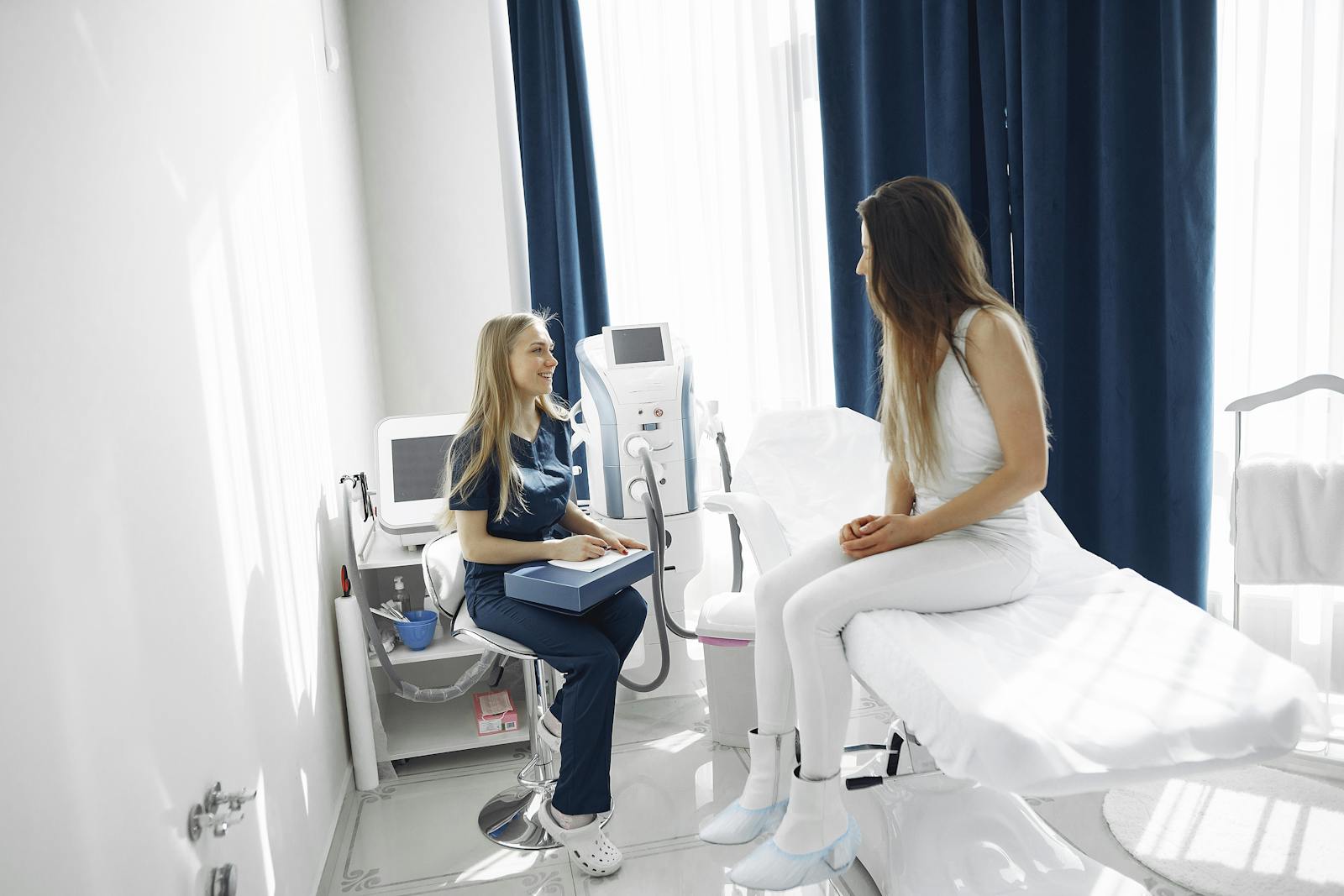A discectomy is a specific surgical procedure designed to alleviate pain caused by herniated or ruptured spinal discs. This procedure involves removing parts of these discs, specifically those pressing on nerve roots or the spinal cord. The surgery’s primary purpose is to enhance patient mobility and reduce pain. Symptoms indicating the need for a discectomy can include severe back pain, numbness, and difficulty moving. Preparing for this operation involves pre-surgical assessments and patient education.
Understanding a Discectomy
Discectomy, a frequent surgical intervention, involves removing part of a herniated disc to ease nerve pressure and reduce pain. Misconceptions about discectomy persist, including the false notion that it results in reduced mobility. In fact, successful discectomies often enhance movement by removing the pain source.
Patient outcomes post-discectomy depend on individual health, disc herniation severity, and surgeon expertise. Some patients experience immediate relief, others report gradual pain reduction. Postoperative care, including physical therapy and regular check-ups, is crucial for optimal recovery.
The Anatomy of the Spine
The spine, the body’s primary support, is a complex structure comprising 33 individual bones or vertebrae. These vertebrae, stacked sequentially, are divided into five regions: cervical, thoracic, lumbar, sacral, and coccyx, each with unique functions. The cervical vertebrae support the skull, facilitate neck movement, and guard the spinal cord. The thoracic vertebrae stabilize the rib cage and shield the heart and lungs, while the lumbar vertebrae bear the body’s weight and allow motion.
Intervertebral discs, gel-like substances, separate each vertebra and act as cushions to avoid bone friction. This function is aided by a complex network of ligaments, tendons, and muscles providing extra stability and flexibility. Knowledge of this intricate spinal structure is essential to comprehend a discectomy, its procedure, and its impact on the body’s support system.
Causes of Disc-Related Pain
Disc-related pain stems from conditions causing disc degeneration or damage, such as a herniated disc, a bulging disc, or a disc rupture. These conditions exert pressure on surrounding nerves, leading to discomfort or pain. Several factors may predispose an individual to these conditions:
- Dietary habits: Poor nutrition can cause obesity, increasing stress on discs and leading to degeneration. A nutrient-deficient diet may hinder the body’s ability to repair damaged discs.
- Genetic factors: Some individuals may be genetically predisposed to disc degeneration due to inherent disc material properties or their body’s response to stress and injury.
- Aging: With age, discs naturally lose elasticity and flexibility, leading to increased damage risk.
- Lifestyle: Sedentary lifestyles, poor posture, and repetitive strain contribute to disc degeneration and associated pain.
These factors can lead to disc-related pain, requiring treatments like discectomy.
Symptoms Indicating a Discectomy
Determining the need for a discectomy relies on identifying key symptoms. These include specific pain types, numbness, and weakness. Awareness of potential post-discectomy symptoms is also crucial.
Recognizing Discectomy-Related Pain
Persistent back or leg pain, numbness, or weakness may indicate a need for a discectomy. This type of pain often reveals conditions such as herniated disc or spinal stenosis. Timely recognition is crucial for intervention and prevention of disc degeneration.
- Persistent Pain: Pain lasting beyond three months or worsening acute pain might call for a discectomy.
- Radiating Pain: Pain extending from lower back to legs often suggests nerve impingement.
- Resistant Pain: Pain not alleviated by conservative treatments like physical therapy or medication may necessitate discectomy.
- Disruptive Pain: Pain leading to daily activity limitations, immobility, or severe discomfort needs attention.
Discectomy: Numbness and Weakness
Persistent pain, numbness, and weakness, especially in areas the affected nerve services, may signify a potential need for discectomy. Numbness, which can stem from simple compression to severe nerve damage, typically radiates along the nerve’s path into limbs, impacting daily task performance. Concurrently, the weakened muscle strength and coordination result from compromised neural signals. These signals disrupt muscle function, potentially causing atrophy if untreated. These symptoms suggest a possible requirement for discectomy, a surgery to remove the disc material compressing the nerve.
Understanding Post-Discectomy Symptoms
Post-discectomy, the body’s response to surgery can present as persistent pain, numbness, or weakness in areas previously affected by nerve compression.
- Pain: Persistent or recurring pain in the back or leg could signify complications such as nerve damage or infection post-discectomy.
- Numbness or Weakness: These symptoms may indicate incomplete nerve decompression or potential nerve damage.
- Limited Mobility: Hindered movement, especially in the spine or limbs, is a warning sign of potential post-discectomy issues.
- Emotional Changes: Post-discectomy emotional alterations like depression or anxiety, often correlate with chronic pain or reduced functionality.
Preparing for a Discectomy
Discectomy preparation entails comprehensive preoperative assessments, surgeon consultations, dietary adjustments, anxiety management, and understanding the procedure. Preoperative assessments encompass a physical examination, spine imaging studies, and patient’s medical history review. These evaluations facilitate risk identification and surgical plan customization.
The discectomy diet plans, aimed at promoting recovery and health, suggest increased protein intake for tissue repair and reduced sodium and sugar consumption for inflammation control and cardiovascular health.
Anxiety management, vital for a smoother recovery, includes addressing patient concerns, providing procedure understanding, and recommending relaxation techniques, mindfulness exercises, or medication. This ensures patients are mentally prepared and comfortable before surgery.
The Discectomy Procedure Explained
The discectomy procedure involves removing a painful, symptomatic intervertebral disc segment. This surgical action carries specific risks and benefits, which require thorough comprehension before operation. Postoperative recovery follows strict guidelines and precautions to ensure optimal healing and function restoration.
Understanding Discectomy Procedure
A discectomy procedure, a surgical intervention, involves removing a pain-causing part of an intervertebral disc, pressing on a nerve. The operation includes:
- Incision: A small cut is made in the back to reach the affected disc.
- Removal: Specialized medical tools extract the disc portion causing nerve compression.
- Closure: Stitches or surgical staples close the incision.
- Recovery: The postoperative recovery length varies according to individual health conditions and procedure complexity.
Understanding the cost of discectomy and insurance coverage is critical for financial planning. It’s advised to discuss these elements with your healthcare provider.
Risks and Benefits
Discectomy, a surgical procedure, offers benefits like pain alleviation, mobility restoration, and life quality improvement. However, it carries risks such as infection, nerve damage, and bleeding. Some patients may not find symptom relief or experience worsening symptoms. Costs, influenced by complexity, surgeon expertise, and location, can be high, potentially leading to insurance coverage issues and out-of-pocket expenses. Discussing these pros and cons with a healthcare provider is crucial for informed decision-making.
Recovery After Discectomy
Post-discectomy recovery involves pain management, infection prevention, dietary adjustments, and emotional support.
- Pain Management: Prescribed medication and physical therapy minimize discomfort and accelerate healing.
- Infection Prevention: Daily incision cleaning and infection symptom monitoring are necessary.
- Discectomy Diet: Protein, Vitamin C, and zinc-rich foods enhance tissue repair and wound healing.
- Emotional Support: Psychological assistance is crucial for stress and anxiety control during recovery.
Each step is crucial for a successful recovery.
Risks and Complications
Discectomy, while generally successful, carries potential risks such as infection, bleeding, nerve damage, and disc herniation recurrence.
Anesthesia use in discectomy poses risks like allergic reactions, breathing issues, and in rare instances, death. Mitigation of these risks involves thorough pre-operative assessments.
Infections, although rare due to prophylactic antibiotics, may occur and can affect both superficial and deep tissues. Symptoms include fever, increased pain, redness, and discharge from the incision site; immediate diagnosis and treatment are crucial.
Bleeding, typically minimal, can sometimes lead to significant hematoma requiring further surgery. Rare nerve damage could result in weakness, numbness, or paralysis.
Approximately 5-15% of patients might experience disc herniation recurrence post-discectomy, necessitating additional surgery.
Post-Operative Care
Post-operative care following a discectomy focuses on pain management strategies and recovery timeline expectations. This care includes immediate aftercare procedures and long-term rehabilitation plans, crucial for patient’s health and functionality restoration.
Pain Management Strategies
Effective post-operative pain management, especially post-discectomy, integrates medication, physical therapy, lifestyle changes, and mindfulness techniques.
- Medication: Prescription of NSAIDs, opioids or nerve pain drugs varies with pain type and intensity.
- Physical Therapy: Strengthening back via gentle exercises diminishes pain gradually.
- Lifestyle Modifications: Back pain reduction is achievable through healthy weight, correct posture, and regular exercise.
- Mindfulness Techniques: Pain perception manipulation through meditation, deep breathing, and muscle relaxation techniques decreases discomfort.
Recovery Timeline Expectations
Understanding the recovery timeline after a discectomy involves knowing the post-operative care stages, which may include hospital stay, wound care, nutrition, physical therapy, and emotional wellbeing. Patients typically stay in the hospital for one to two days post-surgery. After discharge, prioritizing wound care with strict hygiene protocols is essential to prevent infection. A balanced diet, rich in protein, vitamins, and minerals, supports wound healing and nutrient replenishment. Physical therapy usually starts within a week, with gentle exercises for movement restoration. Emotional wellbeing is also significant, with potential temporary lifestyle changes and emotional stress. Full recovery may take weeks to months.
Expected Recovery Timeline
Discectomy recovery timeline depends on individual health, disc damage extent, surgical technique, post-surgery nutrition, and emotional wellbeing. A structured recovery timeline includes:
- Post-Surgery (Days 1-7): Focus is on pain management, complication prevention, rest, nutrition, and emotional support.
- Short-Term Recovery (Weeks 2-6): Mobility restoration begins, pain decreases, and emotional wellbeing is monitored due to potential frustration or depression from limited function.
- Intermediate Recovery (Weeks 7-12): Strength and flexibility enhancement occurs. Overexertion risk necessitates caution.
- Long-Term Recovery (Beyond 12 weeks): Full recovery is typically reached but may extend in cases of severe disc damage or individual health conditions.
Rehabilitation and Physical Therapy
Rehabilitation and physical therapy are crucial for recovery post-discectomy, enhancing mobility, strength, and function. Specialized therapy equipment assists in regaining muscle control and alignment affected by surgery.
The primary rehabilitation phase targets pain management and inflammation reduction, achieved through medication, rest, and cold therapy. The next phases introduce gradually intensifying mobility exercises to restore function, flexibility, and range of motion, guided by a physical therapist.
Therapy tools like resistance bands, exercise balls, and balance boards provide controlled, progressive resistance and stability training. They aid in neural pathway re-establishment and spine-supporting musculature strengthening, reducing the risk of recurrent disc issues.
Success Rates and Outcomes
Evaluating discectomy’s effectiveness, success rates and outcomes depend on factors such as patient health, condition severity, surgeon skill, and procedure specifics. Key points include:
- Success Rates: Studies report discectomy success rates between 80-90%, depending on success definitions.
- Recovery Time: Post-discectomy recovery ranges from weeks to months based on individual circumstances.
- Discectomy Cost Analysis: Discectomy costs vary based on location, hospital charges, surgeon fees, and case complexity. Comprehensive cost analysis is crucial for informed decision-making.
- Insurance Coverage Exploration: Insurance providers often cover significant portions of discectomy costs. Coverage varies, so patients should investigate their policy for financial responsibility clarity.
Alternatives to Discectomy
Discectomy alternatives fall into two categories: non-surgical treatments and lifestyle modifications. Non-surgical options aim to control symptoms without invasive procedures, including pain management medications, physical therapy for back strengthening and flexibility improvement, and epidural steroid injections to decrease inflammation and pain. These are ideal for patients who prefer non-surgical methods or whose health condition limits surgical options.
Lifestyle modifications, on the other hand, focus on enhancing quality of life and symptom control. They involve maintaining optimal body weight to minimize spinal stress, regular physical activity for stronger, flexible back muscles, smoking cessation to prevent disc disease, and good posture maintenance.
Each alternative’s effectiveness varies per individual, considering their unique symptoms, overall health status, and personal preferences. Thus, consultation with a healthcare professional is crucial for decision-making.
Frequently Asked Questions
How Much Does a Discectomy Surgery Typically Cost?
Discectomy surgery costs typically range from $15,000 to $50,000, considering factors like recovery time and success rate.
Are There Any Dietary Restrictions Before or After Discectomy?
Pre-surgery hydration is crucial for discectomy patients. Post-surgery, inclusion of protein and vitamin-rich foods supports healing and energy replenishment. For tailored advice, consult a healthcare professional.
Can Discectomy Affect Sexual Functions or Fertility?
Discectomy typically does not directly impact sexual functions or fertility. However, physical limitations and emotional effects during post-operative recovery may influence sexual activity. Consultation with a healthcare provider is advised for any concerns.
Does Health Insurance Typically Cover Discectomy Procedures?
Typically, health insurance covers necessary discectomy procedures. Coverage varies based on individual policies, including potential limitations and required copayments. Prior to surgery, verifying coverage with the specific insurer is recommended.
Can Discectomy Surgery Be Performed as an Outpatient Procedure?
Discectomy surgery is feasible as an outpatient procedure. Consultation with a medical expert is critical for understanding recovery duration and potential post-surgical complications, ensuring optimal patient care and health outcomes.



